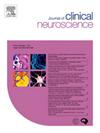Time to response and predictors of seizure response to phenobarbitone therapy among neonates admitted with hypoxic-ischemic encephalopathy at Nekemte Comprehensive Specialized Hospital, Ethiopia
IF 1.9
4区 医学
Q3 CLINICAL NEUROLOGY
引用次数: 0
Abstract
Background
Hypoxic-ischemic encephalopathy is a brain injury that occurs in newborns when there is not enough blood flow to the brain. Recent studies have raised concerns about how well phenobarbitone works for treating seizures in newborns, as it may not effectively control seizures with the initial loading and repeated doses.
Objective
This study evaluated the time to respond and predictors of seizure response to phenobarbitone therapy among neonates admitted with hypoxic-ischemic encephalopathy.
Methods and Materials
A retrospective cohort study was conducted at Nekemte Comprehensive Specialized Hospital, using randomly selected medical records of 284 neonates who were treated between January 2020 and December 31, 2023. The study included neonates diagnosed with perinatal asphyxia stage II and III hypoxic-ischemic encephalopathy, who were treated with nasogastric phenobarbitone. The treatment included an initial loading dose of 20 mg/kg and two repeated doses of 10 mg/kg. Survival analysis was conducted. Predictor variables with a p-value ≤ 0.25 in bivariate Cox regression were included in the multivariable Cox regression analysis. Adjusted Hazard Ratios with 95 % confidence intervals were computed, and a p-value < 0.05 was considered statistically significant.
Results
Out of the 284 neonates, 210 (73.9 %) responded to the phenobarbitone treatment. The incidence rate of response was 27.73 per 1000 person-hours of observation, with a median time to response of 29 h (IQR 26.5–32 h). Low birth weight (AHR = 0.59; 95 %CI 0.58, 0.98), subtle seizure type (AHR: 2.35; 95 % CI 1.09, 5.08), severe hypothermia (AHR = 0.23; 95 % CI 0.052, 0.26), and seizure frequency of twice or more (AHR = 0.436, 95 % CI 0.31, 0.61) were identified as predictors of seizure response.
Conclusion and recommendations
The overall incidence rate of response was low. Having a history of twice or more frequency of seizure insult, severe hypothermia and low birth weight decreased the response rate while subtle types of seizure increased the likelihood of response to phenobarbitone therapy. Electroencephalogram-confirmed seizure treatment and combined management with therapeutic hypothermia for high-risk newborns need to be started for better response and reduced response time. Further controlled studies utilizing both clinical and neuroimaging for definitive outcome measurement are recommended.
求助全文
约1分钟内获得全文
求助全文
来源期刊

Journal of Clinical Neuroscience
医学-临床神经学
CiteScore
4.50
自引率
0.00%
发文量
402
审稿时长
40 days
期刊介绍:
This International journal, Journal of Clinical Neuroscience, publishes articles on clinical neurosurgery and neurology and the related neurosciences such as neuro-pathology, neuro-radiology, neuro-ophthalmology and neuro-physiology.
The journal has a broad International perspective, and emphasises the advances occurring in Asia, the Pacific Rim region, Europe and North America. The Journal acts as a focus for publication of major clinical and laboratory research, as well as publishing solicited manuscripts on specific subjects from experts, case reports and other information of interest to clinicians working in the clinical neurosciences.
 求助内容:
求助内容: 应助结果提醒方式:
应助结果提醒方式:


